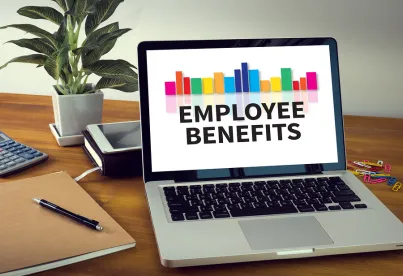As the coronavirus continues to spread within the United States, employers are dealing with a number of issues with respect to workforce, labor, and employee benefits. The following are common questions regarding employee benefits issues that employers may face sooner rather than later. We will update this list of questions and answers as the situation unfolds.
Q1: IF AN EMPLOYER FURLOUGHS EMPLOYEES, ARE THEY STILL ELIGIBLE FOR GROUP MEDICAL PLAN COVERAGE?
It depends. The terms of the group medical plan document or applicable certificate of coverage will dictate whether employees who are no longer “actively at work” may continue active coverage. Most plans provide that an employee who is not “actively at work” may only continue coverage for a designated period of time. After the expiration of this designated period, active coverage will be terminated and the covered employee will be eligible for COBRA.
Employers that maintain “self-funded” plans may have more flexibility, as they may amend their plans to waive eligibility conditions and allow furloughed employees to continue active coverage. (Note that some employers with fully insured plans may be able to work out similar arrangements with their insurance carriers.) Employers with self-funded plans that want to waive actively at work requirements or extend coverage while employees are on leave or furlough need to obtain the consent of their reinsurance carriers to avoid any coverage issues.
Finally, employers utilizing an Affordable Care Act (ACA) lookback and stability approach to determine full-time status for health plan purposes should consider whether affected employees are in a stability period that would result in continued eligibility for the duration of the stability period. Reduced hours in 2020 might impact such employees’ full-time status for the next stability period (e.g., 2021 for plans using a calendar year stability period). Employers should also consider whether to provide relief for such employees in future stability periods.
Q2: IF AN EMPLOYEE IS ON LEAVE BECAUSE HE OR SHE IS EXPERIENCING CORONAVIRUS-LIKE SYMPTOMS, IS THE EMPLOYEE ELIGIBLE FOR GROUP MEDICAL COVERAGE?
It depends on whether the employer sponsoring the plan is subject to the Family and Medical Leave Act (FMLA). If so, then the leave is likely protected by the FMLA, meaning that continued group medical coverage must be provided for the period of FMLA leave, and the employer’s policies regarding payment for coverage during FMLA-qualifying leaves will apply. For employers that are not subject to the FMLA, applicable policies and procedures regarding continued coverage during periods of sick leave will apply, as well as the plan terms and ACA full-time measurement and stability issues noted in Q1 above.
Q3: IF EMPLOYEES ARE FURLOUGHED WITHOUT PAY AND GROUP MEDICAL COVERAGE IS CONTINUED, HOW SHOULD THE PREMIUMS BE PAID?
There are a few options. First, an employer can cover the premiums for the furloughed employees in order to keep coverage in place. When the employees return, the employer may attempt to recover the employee’s share of the cost of the continued coverage from the employees. Alternatively, an employer may send an invoice or coupon to covered employees during the period of leave, asking the employees to remit premium payments on an “after-tax” basis. Other potential arrangements that employers may think about include “pre-payment” of premiums on a pretax basis or automatic deductions from pay upon return from leave. Relevant state law needs to be reviewed as well before making any decisions about automatic deductions from pay.
Q4: IS TESTING FOR COVID-19 COVERED BY AN EMPLOYER’S GROUP MEDICAL PLAN?
It depends. If an employer sponsors a fully insured plan, then the terms of the plan will determine whether diagnostic testing for COVID-19 is a covered benefit and what the participant must pay. Recently, a number of states have required fully insured plans to cover 100% of the cost of COVID-19 testing for covered participants. In addition, several large insurers have announced they will cover the cost of testing without cost-sharing and state and federal governments are rolling out no-cost drive-through testing locations.
If an employer sponsors a self-funded plan, then the plan is not subject to state cost-sharing mandates, though such employers may want to consider whether to provide coverage for COVID-19 testing without cost-sharing. Of course, they should check with their reinsurance carriers before making such changes.
On a related note, the IRS recently released guidance clarifying that a high-deductible group medical plan that waives cost-sharing requirements for COVID-19 testing will not run afoul of rules that apply to health savings accounts that are paired with high-deductible plans. Therefore, employers sponsoring a high-deductible plan paired with an HSA will not face compliance issues if they waive cost-sharing for tests.
Note: The US House of Representatives passed a bill on March 14 that requires all private “group medical plans” to provide testing for COVID-19 with no cost-sharing. We will monitor the status of this bill as it moves through the legislative process. Technical corrections to the bill were approved by the House on March 16.
Q5: CAN EMPLOYEES TAKE HARDSHIP WITHDRAWALS FROM A 401(K) PLAN IF THEY ARE FURLOUGHED WITHOUT PAY?
It depends on the standard that the 401(k) plan uses to determine whether an employee is eligible for a hardship distribution. If the plan incorporates the traditional regulatory “safe harbors” for determining whether an employee qualifies for a hardship distribution, then it is unlikely that a period of prolonged unpaid leave will constitute a covered hardship. (Note however that payment for medical expenses incurred in connection with treating COVID-19 will qualify under the “safe harbor” standard). If, on the other hand, the plan incorporates a different standard based on relevant facts and circumstances, then prolonged financial instability may qualify. Most employers utilize safe harbor hardship rules, and shifting to a facts and circumstances approach should only be done if the employer has the administrative capacity to handle reviews of each participant’s financial situation. Finally, many plans have outsourced hardship distribution reviews to their recordkeeper/trustee, and any changes should be coordinated with providers.
Q6: ARE THERE HIPAA CONCERNS FOR EMPLOYERS WITH RESPECT TO COVID-19?
HIPAA concerns come into play in an employer’s role as a sponsor of a group medical plan. If an employee presents with symptoms consistent with the coronavirus, any medical information that the employer learns by virtue of sponsoring the group medical plan will be considered “protected health information.” Such information can be disclosed only to the employee’s family members and other individuals involved in the patient’s care or to public health authorities. Information that is learned by an employer through means other than the group medical plan is considered “confidential” and should be treated accordingly, even though such information is not “protected health information” under HIPAA. Therefore, we recommend that employers limit sharing any information learned about an employee’s symptoms, regardless of the source of the information.
Q7: WILL EMPLOYEES BE ELIGIBLE FOR SHORT-TERM OR LONG-TERM DISABILITY PLANS DURING A PERIOD OF LEAVE?
Employees will only be eligible for these benefits if they personally are experiencing medical difficulties relating to the coronavirus or some other illness. Employees who are furloughed without pay will not generally be eligible for these benefit plans.
Q8: WHAT WILL HAPPEN TO DEPENDENT CARE ACCOUNTS DURING PROLONGED PERIODS OF LEAVE?
In order to be eligible to access dependent care funds, an employee must be gainfully employed. The general rule is that employees who are on leaves of absence longer than two weeks are no longer gainfully employed, and therefore cannot submit expenses for covered expenses while on prolonged leaves of absence. Given the cancellation of many child care arrangements, employees may want to change their dependent care elections to reduce or cease contributions. Employers should check their plan document regarding midyear changes to determine whether such changes are allowed.




 />i
/>i

